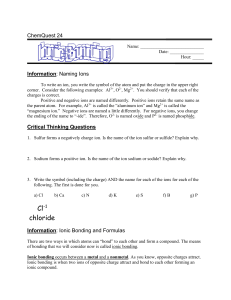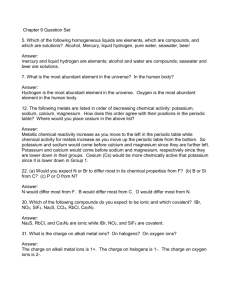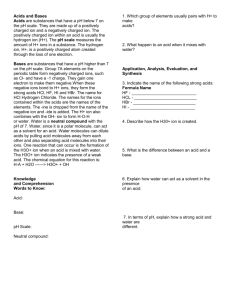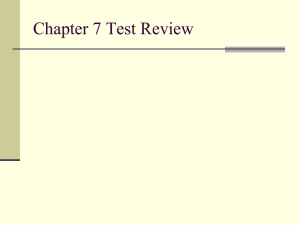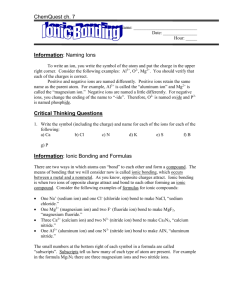Ionic Bonding
advertisement
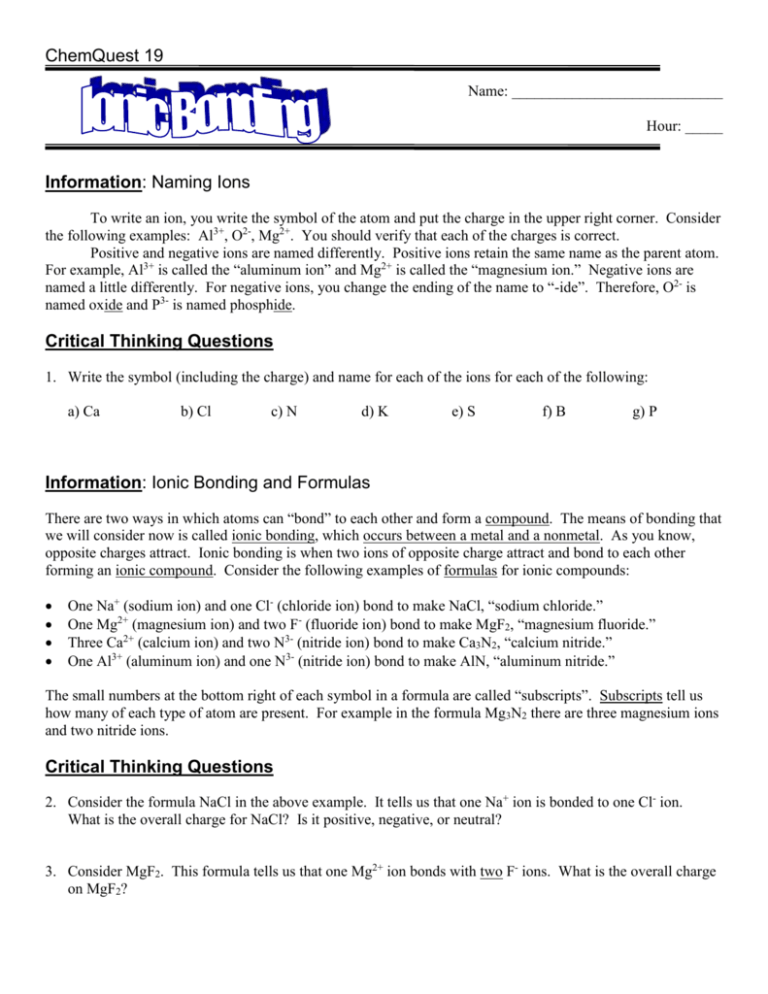
ChemQuest 19 Name: ____________________________ Hour: _____ Information: Naming Ions To write an ion, you write the symbol of the atom and put the charge in the upper right corner. Consider the following examples: Al3+, O2-, Mg2+. You should verify that each of the charges is correct. Positive and negative ions are named differently. Positive ions retain the same name as the parent atom. For example, Al3+ is called the “aluminum ion” and Mg2+ is called the “magnesium ion.” Negative ions are named a little differently. For negative ions, you change the ending of the name to “-ide”. Therefore, O2- is named oxide and P3- is named phosphide. Critical Thinking Questions 1. Write the symbol (including the charge) and name for each of the ions for each of the following: a) Ca b) Cl c) N d) K e) S f) B g) P Information: Ionic Bonding and Formulas There are two ways in which atoms can “bond” to each other and form a compound. The means of bonding that we will consider now is called ionic bonding, which occurs between a metal and a nonmetal. As you know, opposite charges attract. Ionic bonding is when two ions of opposite charge attract and bond to each other forming an ionic compound. Consider the following examples of formulas for ionic compounds: One Na+ (sodium ion) and one Cl- (chloride ion) bond to make NaCl, “sodium chloride.” One Mg2+ (magnesium ion) and two F- (fluoride ion) bond to make MgF2, “magnesium fluoride.” Three Ca2+ (calcium ion) and two N3- (nitride ion) bond to make Ca3N2, “calcium nitride.” One Al3+ (aluminum ion) and one N3- (nitride ion) bond to make AlN, “aluminum nitride.” The small numbers at the bottom right of each symbol in a formula are called “subscripts”. Subscripts tell us how many of each type of atom are present. For example in the formula Mg3N2 there are three magnesium ions and two nitride ions. Critical Thinking Questions 2. Consider the formula NaCl in the above example. It tells us that one Na+ ion is bonded to one Cl- ion. What is the overall charge for NaCl? Is it positive, negative, or neutral? 3. Consider MgF2. This formula tells us that one Mg2+ ion bonds with two F- ions. What is the overall charge on MgF2? 4. What is the overall charge on any ionic compound? 5. Why is calcium nitride written like Ca3N2 and not something like CaN2 or Ca2N3? In other words why do exactly three calcium ions bond with exactly two nitride ions? 6. The formula Ca3N2 can never be written as N2Ca3. To find out why, take note of each of the four example formulas given above. a) In terms of charge, what do the first ions named all have in common? b) In terms of charge, what do the second ions named all have in common? c) Now, why can’t Ca3N2 ever be written like N2Ca3? 7. There are two rules to follow when writing formulas for ionic compounds. One has to do with charges (see questions 4 and 5) and the other has to do with which atom to write first and which one to write second (see question 6). What are these two rules? 8. What is wrong with the following formulas? a) Al2S b) PNa3 c) Mg2S2 9. Write the formula and name for the compound that forms when the following atoms form ionic compounds. The first is done for you. a) nitrogen and sodium b) barium and sulfur c) magnesium and iodine e) calcium and phosphorus f) sodium and sulfur Na3N sodium nitride d) oxygen and aluminum 10. Given the following compounds, determine the charge on the unknown ion “X”. a) X2S b) MgX c) X3P2
